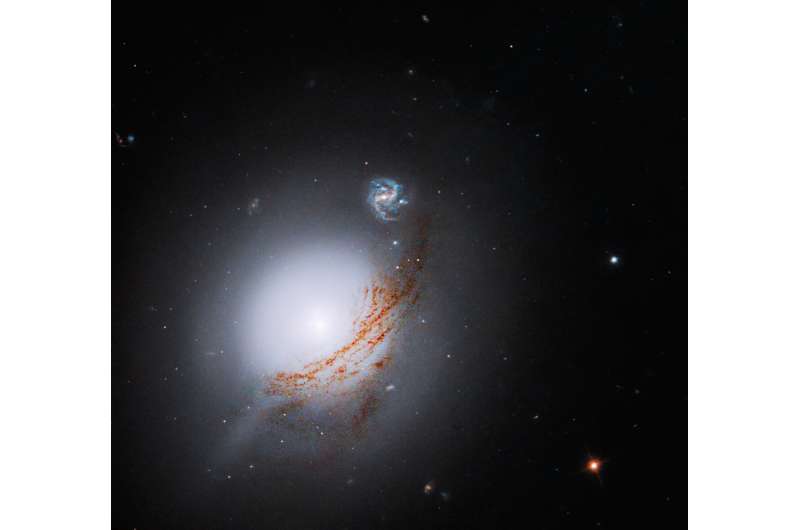This article has been reviewed according to Science X's editorial process and policies. Editors have highlighted the following attributes while ensuring the content's credibility:
fact-checked
trusted source
proofread
Hubble views lenticular galaxy NGC 5283

The lenticular galaxy NGC 5283 is the subject of this NASA Hubble Space Telescope image. NGC 5283 contains an active galactic nucleus, or AGN. An AGN is an extremely bright region at the heart of a galaxy where a supermassive black hole exists. When dust and gas fall into the black hole, the matter heats up and emits light across the electromagnetic spectrum.
NGC 5283 is a Seyfert galaxy. About 10% of all galaxies are Seyfert galaxies, and they differ from other galaxies that contain AGNs because the galaxy itself is clearly visible. Other AGNs emit so much radiation that they outshine or make it impossible to observe the structure of their host galaxy.
Hubble observed this galaxy as part of a survey for a dataset about nearby AGNs, which will serve as a resource for astronomers investigating AGN physics, black holes, host galaxy structure, and more.
Provided by NASA's Goddard Space Flight Center





















